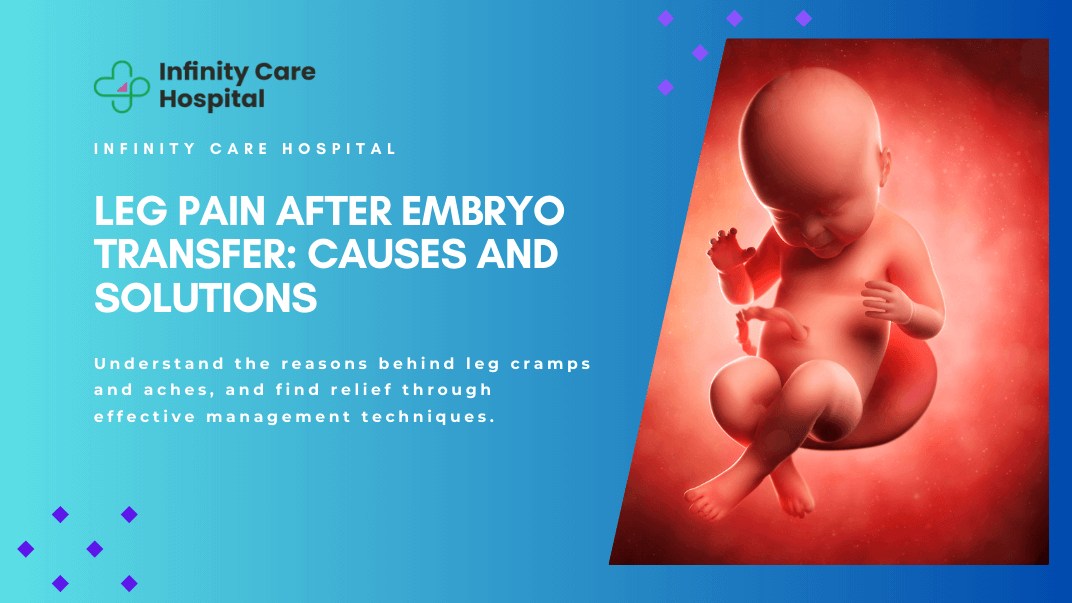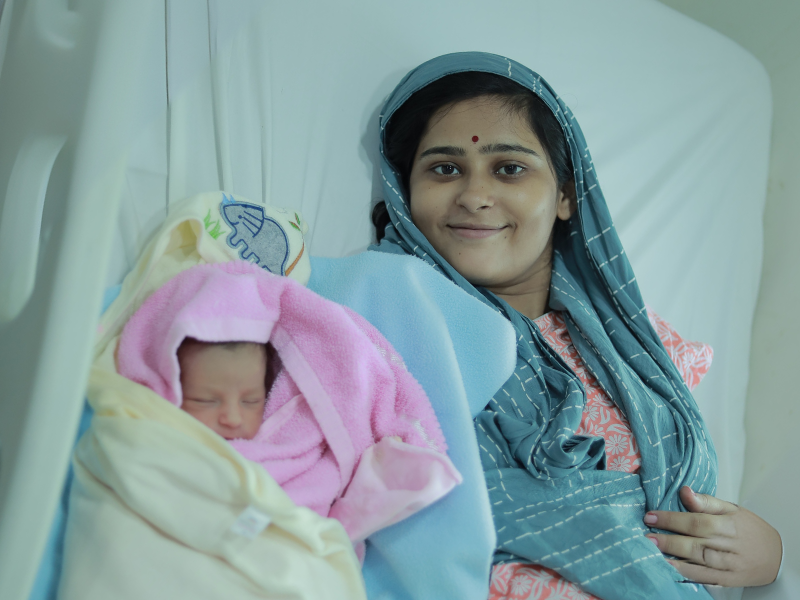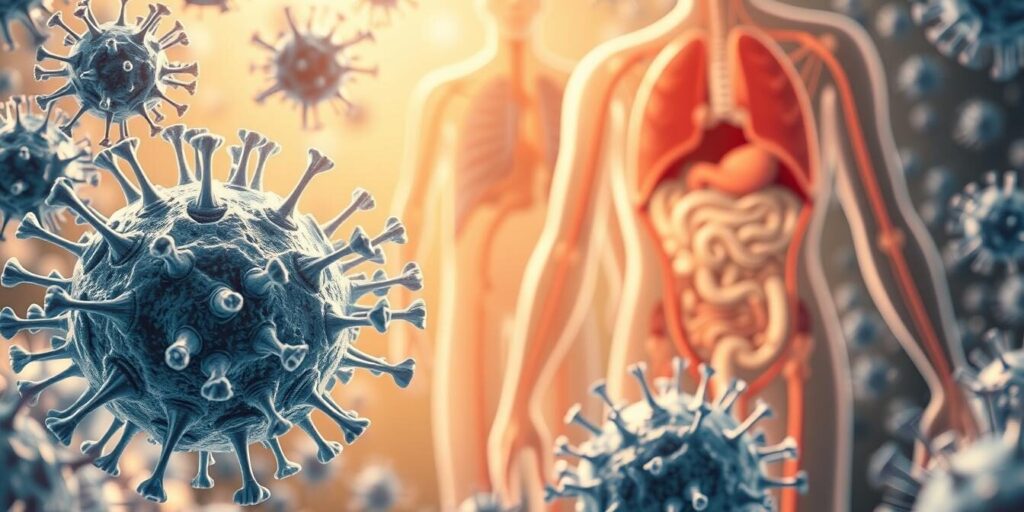Embarking on the journey towards parenthood through IVF can be both exhilarating and nerve-wracking. One unexpected symptom many patients experience is leg pain after embryo transfer. But have you ever wondered, Why do I have leg pain after my embryo transfer? This article aims to provide a comprehensive understanding of the causes behind this discomfort and offer effective solutions to manage it.
From hormonal changes and stress factors to potential medical conditions, we’ll explore the various reasons for leg pain and suggest natural remedies as well as professional medical help. By the end, you’ll have the knowledge to navigate this phase of your IVF journey more comfortably.
Key Takeaways
- Leg pain after embryo transfer is a common experience, but the intensity and duration can vary from person to person.
- Potential causes include hormonal changes, stress, medications used in IVF treatment, and underlying medical conditions.
- Seeking medical attention is crucial if the pain is severe or persistent, or if you experience additional concerning symptoms.
- Natural remedies such as massage, warm baths, and gentle stretching can provide temporary relief, while medications or medical intervention may be necessary in some cases.
- Prioritizing rest, relaxation, and gentle physical activity can help manage leg pain and support the implantation process.
Introduction
Embarking on the journey towards having a child through IVF can be both exhilarating and nerve-wracking. After going through the meticulous IVF process, you may encounter an unexpected symptom – leg pain after the embryo transfer procedure. Understanding the potential causes and management strategies for this discomfort, such as leg pain after embryo transfer, embryo transfer discomfort, postembryonic transfer leg cramps, and leg aches following ivf, is crucial to navigating this phase of your fertility journey smoothly.
Embarking on the IVF Journey
The path to parenthood through IVF can be a rollercoaster of emotions, filled with both excitement and challenges. As you embark on this journey, it’s important to be prepared for the various physical and emotional changes your body may experience, including the possibility of leg pain after the embryo transfer procedure.
Understanding Leg Pain After Embryo Transfer
Leg pain after embryo transfer, also known as embryo transfer discomfort, postembryonic transfer leg cramps, or leg aches following ivf, is a common experience for many individuals undergoing IVF treatment. Recognizing the potential causes and having strategies to manage this discomfort can help you navigate this phase of your fertility journey more comfortably.
Is Leg Pain Normal After Embryo Transfer?
Experiencing leg pain after embryo transfer is a common occurrence among individuals undergoing in vitro fertilization (IVF) treatment. While a certain level of embryo transfer discomfort is normal due to the body’s natural adjustments and hormonal changes, the intensity and duration of the leg aches following ivf can vary from person to person.
Commonality and Individual Experiences
Many patients report experiencing some degree of postembryonic transfer leg cramps after the embryo transfer procedure. This is often a result of the body’s response to the hormonal fluctuations and the stress associated with the IVF process. However, the severity and persistence of the leg pain can differ significantly among individuals.
When to Consult a Healthcare Provider
While mild discomfort is expected, it is important to be attentive to your body’s signals. If the leg pain after embryo transfer is particularly severe or persistent, it is recommended to consult your healthcare provider. Severe or concerning leg aches following ivf may require further medical evaluation and intervention to ensure your well-being and the optimal conditions for embryo implantation.
Leg Pain as a Side Effect After Embryo Transfer
Leg pain can be a common side effect experienced by some patients following the embryo transfer procedure. This discomfort can be attributed to a variety of factors, including hormonal changes, stress and emotional factors, as well as the medications used during the IVF treatment process.
Hormonal Changes
The IVF journey involves significant hormonal fluctuations as the body prepares for the embryo transfer. These hormonal changes, triggered by the fertility medications and the body’s natural response, can contribute to the development of leg pain. The delicate balance of hormones, such as estrogen and progesterone, can lead to inflammation, fluid retention, and increased sensitivity, all of which can manifest as discomfort in the legs.
Stress and Emotional Factors
Undergoing IVF can be an emotionally taxing experience, and the stress and anxiety associated with the treatment can also play a role in the onset of leg pain. Psychological factors, such as worry, tension, and the anticipation of the outcome, can contribute to muscle tension, spasms, and overall discomfort in the legs.
Medications Used in IVF Treatment
The various medications prescribed during the IVF process, including fertility drugs, hormonal supplements, and pain relievers, can also contribute to leg pain as a side effect. These medications can interact with the body’s natural processes, leading to potential side effects such as leg cramps, aches, and discomfort.
Causes of Leg Pain After Embryo Transfer
Unraveling the potential causes of leg pain after an embryo transfer is crucial in finding effective solutions. Several factors can contribute to this discomfort, including Ovarian Hyperstimulation Syndrome (OHSS), the implantation process, hormonal imbalances, increased blood clot risk, and both physical and emotional stress.
Ovarian Hyperstimulation Syndrome (OHSS)
OHSS is a condition where the ovaries react strongly to the fertility medications used during IVF treatment. This can lead to swelling and inflammation in the ovaries, which can sometimes cause referred pain in the legs. Individuals with a history of OHSS or sensitivity to the IVF medications may be more prone to experiencing leg pain after the embryo transfer.
Implantation Process
The natural implantation process, where the fertilized embryo attaches to the uterine lining, can also contribute to leg pain. As the embryo implants, it can cause minor uterine contractions and irritation, which may be felt as discomfort or aches in the legs.
Hormonal Imbalance
The IVF process involves significant hormonal fluctuations, including changes in estrogen, progesterone, and other reproductive hormones. These hormonal imbalances can lead to muscle tension, inflammation, and, in some cases, leg pain.
Blood Clot Risk
IVF treatments can increase the risk of blood clots, a condition known as Deep Vein Thrombosis (DVT). This increased clotting risk can manifest as leg pain, swelling, or discomfort, and requires prompt medical attention.
Physical and Emotional Stress
The entire IVF journey, including the embryo transfer procedure, can be physically and emotionally taxing. The stress and strain on the body can contribute to muscle tension, fatigue, and, in some cases, leg pain. Managing stress through relaxation techniques and support systems can help alleviate this discomfort.
leg pain after embryo transfer
The duration and intensity of leg pain experienced after embryo transfer can vary greatly from person to person. Some individuals may only have mild discomfort for a few days, while others may experience more persistent and severe pain. Understanding the potential factors that contribute to this discomfort is crucial for managing it effectively.
Duration and Intensity of Leg Pain
The duration and intensity of leg pain can be influenced by various factors, including the individual’s response to the IVF medications, the specific embryo transfer procedure, and the body’s natural healing process. Some patients may only experience mild leg pain for a couple of days, while others may struggle with more intense and prolonged discomfort.
It’s important to note that the duration and intensity of leg pain can also be affected by the individual’s overall health and any pre-existing medical conditions. Factors such as age, weight, and previous IVF experiences can all play a role in the severity and longevity of the leg pain.
Existing Medical Conditions and Risk Factors
Certain existing medical conditions and risk factors can contribute to the development and intensity of leg pain after embryo transfer. Conditions like pelvic inflammatory disease, endometriosis, or a history of difficult or painful embryo transfer procedures can increase the likelihood of experiencing more severe leg pain.
Additionally, individuals who are overweight or obese, or those who have undergone multiple IVF procedures or prior surgeries, may be at a higher risk of experiencing more persistent and intense leg pain following the embryo transfer. It is crucial to discuss any pre-existing medical conditions or risk factors with your healthcare provider to ensure appropriate management and monitoring during this critical period.
Risk Factors for Leg Pain After Embryo Transfer
Certain underlying conditions and lifestyle factors can increase the risk of experiencing leg pain following an embryo transfer procedure. Understanding these potential risk factors can help individuals take proactive measures to manage and potentially prevent this discomfort.
Pelvic Inflammatory Diseases
Individuals with a history of pelvic inflammatory diseases, such as endometritis or salpingitis, may be more susceptible to leg pain after embryo transfer. These conditions can cause inflammation and scarring in the pelvic area, which can contribute to referred pain in the legs.
Endometriosis
Endometriosis, a chronic condition where the uterine lining grows outside the uterus, has been linked to an increased risk of leg pain after embryo transfer. The presence of endometrial tissue in other areas of the body can lead to inflammation and nerve irritation, resulting in discomfort in the legs.
Difficult or Painful Embryo Transfer
If the embryo transfer procedure itself was challenging or caused significant discomfort, it may increase the likelihood of experiencing leg pain in the days and weeks following the transfer. Factors such as cervical stenosis or uterine abnormalities can make the transfer process more difficult, leading to increased pelvic and leg discomfort.
Obesity
Being overweight or obese can be a risk factor for leg pain after embryo transfer. Excess weight can put additional strain on the body, particularly the lower extremities, and may exacerbate any discomfort or inflammation experienced during the IVF process.
Multiple IVF Procedures and Prior Surgeries
Individuals who have undergone multiple IVF cycles or have a history of pelvic or abdominal surgeries may be at a higher risk of developing leg pain after embryo transfer. Repeated exposure to the IVF process and previous surgical interventions can lead to increased scarring and adhesions, which can contribute to leg discomfort.
By being aware of these risk factors, patients can work closely with their healthcare providers to address any underlying conditions, optimize their physical and emotional well-being, and take proactive steps to manage leg pain during the post-embryo transfer period.
Treatments for Leg Pain After Embryo Transfer
Fortunately, there are various treatment options available to manage leg pain after embryo transfer. From natural remedies to medications and medical assistance, individuals can explore different approaches to find relief and support their overall well-being during this critical time.
Natural Remedies
For those seeking a gentler approach, natural remedies can provide temporary relief for leg pain after embryo transfer. Techniques such as massage, warm baths, and gentle stretching can help soothe muscle tension and improve circulation. Additionally, the use of essential oils, such as lavender or chamomile, can have a calming and therapeutic effect.
Medications and Medical Help
In cases where natural remedies do not provide sufficient relief, patients may require medications or seek medical help from their healthcare providers. Depending on the underlying cause and severity of the leg pain, healthcare professionals may recommend over-the-counter pain relievers, anti-inflammatory medications, or even prescription medications to address the discomfort. In some instances, a more comprehensive treatment plan involving physical therapy or specialized medical interventions may be necessary.
Ultimately, it is crucial to work closely with your healthcare provider to determine the most appropriate treatment approach for your individual needs. By exploring a combination of natural remedies and medical interventions, you can find effective ways to manage leg pain after embryo transfer and support your journey towards a successful pregnancy.
Lower Back Pain and Leg Pain After Embryo Transfer
In addition to the potential leg pain experienced after the embryo transfer procedure, some individuals may also encounter lower back pain during this time. Closely monitoring your symptoms and communicating openly with your healthcare provider is crucial to addressing any discomfort effectively.
Monitoring Symptoms
Pay close attention to any discomfort in your lower back and legs, noting the intensity, duration, and any patterns in the pain. This information will be valuable when discussing your condition with your doctor, as it can help identify the underlying causes and guide the appropriate treatment approach.
Gentle Stretching and Hydration
To help alleviate the lower back pain and leg pain after your embryo transfer, consider incorporating gentle stretching exercises into your daily routine. Gentle, low-impact movements can promote blood flow and relaxation in the affected areas. Additionally, ensuring proper hydration by drinking plenty of water can also contribute to reducing discomfort.
Remember, managing any post-embryo transfer symptoms, including lower back and leg pain, requires close collaboration with your healthcare provider. By closely monitoring your condition and exploring gentle, natural remedies, you can navigate this phase of your IVF journey more comfortably.
Precautions and Lifestyle Adjustments
During the post-embryo transfer phase, it’s crucial to take certain precautions and make lifestyle adjustments to support the implantation process and manage any discomfort. By being mindful of your physical activity and prioritizing rest and relaxation, you can create an environment conducive to a successful outcome.
Physical Activity Recommendations
Gentle physical activity is generally recommended after an embryo transfer, as it can help improve blood circulation and promote overall well-being. However, it’s important to avoid vigorous exercises or strenuous tasks that could potentially disrupt the implantation process. Light walking, gentle stretching, and low-impact yoga are some suitable options to keep your body active while respecting the delicate nature of this stage.
Rest and Relaxation
Prioritizing rest and relaxation during the post-embryo transfer period can contribute to a smoother recovery and help alleviate any leg pain or discomfort. Take time to rest, engage in activities that promote calmness and mindfulness, such as meditation or deep breathing exercises, and avoid activities that may cause unnecessary stress or strain. By allowing your body to rest and rejuvenate, you can create the optimal conditions for successful embryo implantation.
When to Seek Medical Attention
While some level of leg pain after embryo transfer is normal, it is crucial to know when to seek medical attention. If the pain is severe or persistent, or if you experience any other concerning symptoms, it is essential to consult your healthcare provider immediately.
Severe or Persistent Pain
If the leg pain you are experiencing is severe or refuses to subside, even with the use of natural remedies or over-the-counter medications, it is a clear indication that you should seek medical attention. Persistent pain may be a sign of a more underlying condition that requires professional evaluation and treatment.
Additional Concerning Symptoms
In addition to severe or persistent leg pain, you should also consult your healthcare provider if you experience any other concerning symptoms, such as swelling, redness, warmth, or difficulty in movement. These additional signs may suggest the presence of a more serious medical issue that requires prompt attention.
Your healthcare provider can properly evaluate your condition, identify the underlying causes, and provide the necessary medical intervention to address the leg pain and ensure your well-being during this critical time. By being proactive and seeking medical attention when necessary, you can better manage your leg pain and focus on the ultimate goal of a successful pregnancy.
Conclusion
Navigating the IVF journey can be a rollercoaster of emotions, and the experience of leg pain after embryo transfer can add to the challenges. However, by understanding the potential causes and managing leg pain after embryo transfer, as well as exploring treatment options and seeking professional guidance, you can better cope with this discomfort and focus on the ultimate goal of a successful pregnancy.
Understanding leg pain after embryo transfer is crucial, as it allows you to take proactive steps to address the issue. Remember, you’re not alone in this journey, and there are healthcare providers and resources available to support you every step of the way. With the right information and support, you can navigate this phase with confidence and resilience.
As you continue on your IVF journey, remember to prioritize your well-being, stay connected with your healthcare team, and embrace the progress you’ve made. With determination and a positive mindset, you can overcome the challenges and move closer to the fulfillment of your dreams.
FAQ
What causes leg pain after an embryo transfer procedure?
Leg pain after embryo transfer can be attributed to several factors, including hormonal changes, stress and emotional factors, as well as the medications used during the IVF treatment.
Is it normal to experience leg pain after an embryo transfer?
Some level of leg pain after embryo transfer is considered normal due to the body’s adjustments and hormonal changes. However, if the pain is severe or persistent, it is important to consult your healthcare provider.
What are the potential risk factors for experiencing leg pain after an embryo transfer?
Risk factors include a history of pelvic inflammatory diseases, endometriosis, a difficult or painful embryo transfer, being overweight or obese, and undergoing multiple IVF procedures or having prior surgeries.
How can leg pain after an embryo transfer be treated?
Natural remedies such as massage, warm baths, gentle stretching, and the use of essential oils can provide temporary relief. If natural methods are not enough, patients may require medications or seek medical help from their healthcare providers.
Can leg pain be accompanied by other symptoms, such as lower back pain?
Yes, some individuals may also experience lower back pain after the embryo transfer procedure. Gentle stretching exercises and staying hydrated can help alleviate discomfort in the lower back and legs during this time.
What precautions should be taken after an embryo transfer to manage leg pain?
It is important to avoid vigorous exercises or strenuous tasks and prioritize rest and relaxation to support the implantation process and manage any discomfort.
When should someone seek medical attention for leg pain after an embryo transfer?
If the leg pain is severe or persistent, or if you experience any other concerning symptoms, it is crucial to consult your healthcare provider for proper evaluation and medical intervention.




